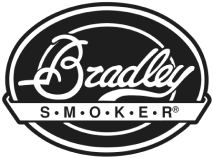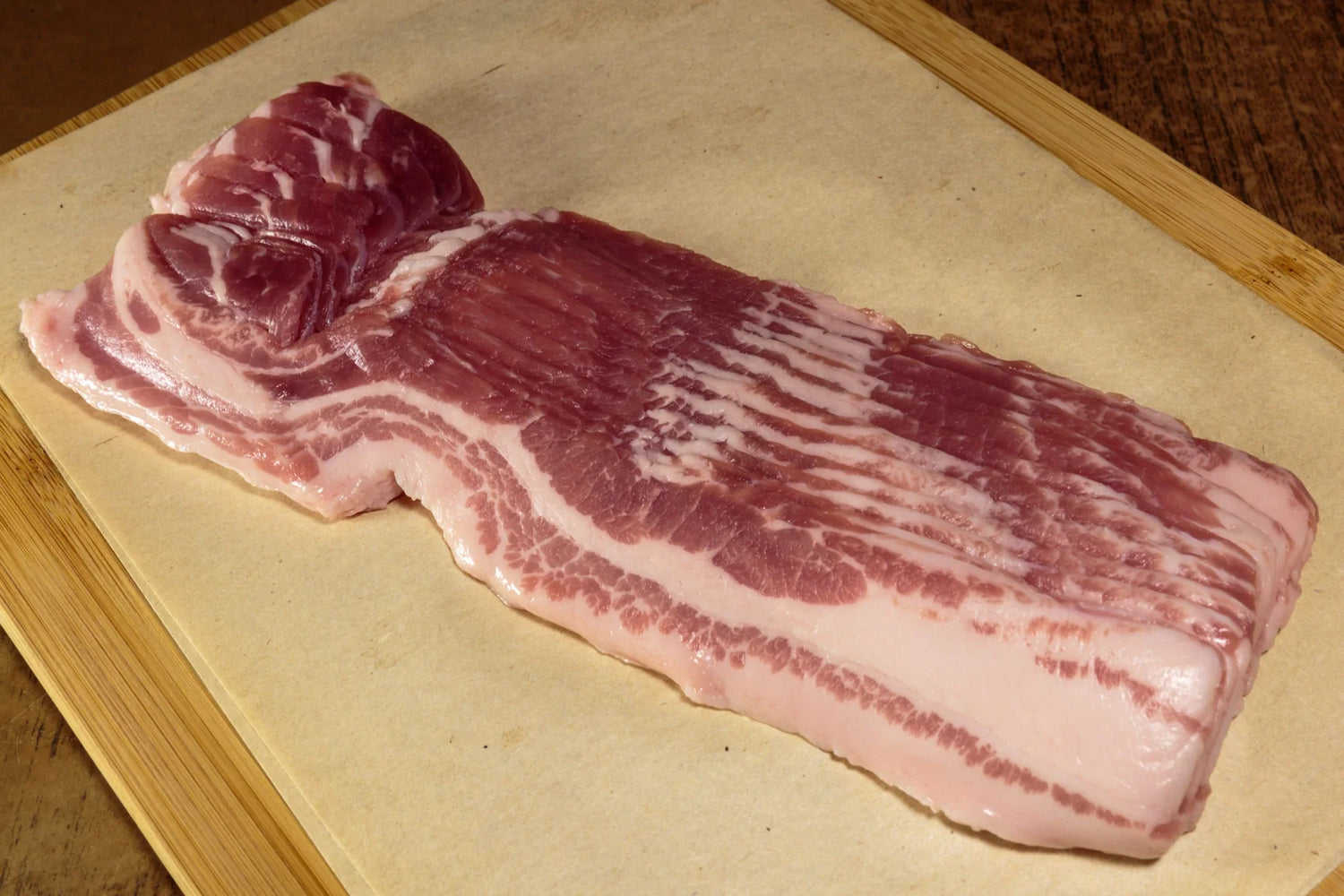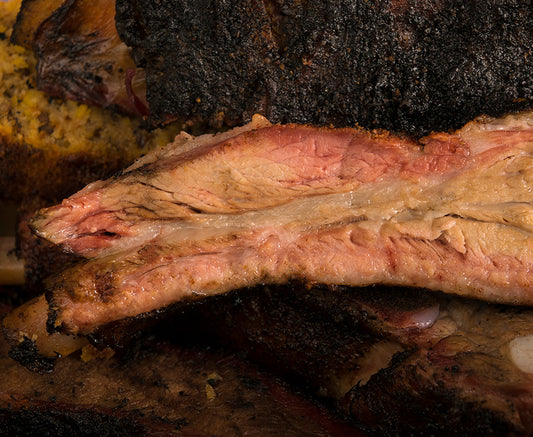Bacon is one of the most popular red meats and you can add it to many meals.
Below we’ll explore what bacon is, different ways of preparing bacon, the difference between ground and formed bacon, and how to prepare both types at home. Finally, we will also look at the precautions you need to take in your preparation.

What Is Bacon?
On a very basic level, bacon is a piece of cured pork that you can eat on its own or use as part of a recipe. Bacon comes from parts of a pig with a high-fat content, usually the belly, the back, or the side. To transform a fresh piece of pork into bacon, the meat must go through a curing process.
The traditional curing process involves dry rubbing salt and other seasonings on the meat for some time. This is called dry curing and typically flavors the meat and cures it to prepare it to be stored.
After curing, the bacon is then washed, dried, and then smoked to add further flavor. The smoking process can be hot or cold, but the ultimate goal is to flavor, not cook the bacon. The type of wood Bisquettes you use in the smoker is an important factor to consider because it largely affects the final flavor of the bacon.
Although dry-cured bacon has been said to be more flavorful, the process is time-consuming, so more people prefer wet curing. Here, the traditional seasonings are mixed to create a brine, and then the bacon is left to soak. Afterward, the bacon is rinsed, dried, and smoked.
Once you finish the smoking process, your bacon is ready to cook.
Check out our entire catalog of articles on brining and curing your meat here:
What’s the Difference Between Pickling, Brining, Marinating, and Curing?
Curing and Smoking Meats for Home Food Preservation
Directions On Brining And Curing Your Meat For Food Smoking
What Is Formed Bacon?
At the beginning of this piece, we said that bacon is not always made from pigs. In recent years, different companies have developed products that you can use with any kind of meat to prepare a bacon-like product called “formed bacon.”
These products contain additives that bind the different pieces of meat together to make one whole piece of meat. In many cases, they come packaged as a ready-to-use seasoning and cure kit.
You can buy off-the-shelf-formed bacon, but you can prepare it at home too. The latter will give you both control over what you consume and room to be as creative as you wish.
How to Make Formed Bacon
The procedure for making formed bacon is simple. First, you need to prepare your beef, wild game, leaner cuts of pork, or even poultry for cooking. If you are using leaner wild game, have some beef or pork fat on standby.
Next, prepare the seasoning mix. You can use the same quantities you use to cure real bacon based on the size of the cut of meat you want to use. Put the meat into the grinder and take it through a medium grind. Add some non-fat dried milk (NFDM) to help with moisture and binding.
Mix all the ingredients properly until you have a uniform mixture. This will take 3–5 minutes if you are using a mixer, but it may be longer if you do it by hand. The next step will be easier if you have foil pans on hand, but you can also use a cooking sheet.
Wrap the mixture tightly with cling wrap so that the meat can come out easier. Pack the pans as densely as you can for better results. Place the pans in the fridge and let them rest. You can keep them anywhere from 8–24 hours. This should give the meat time to form a nice slab.
When you feel the slab is ready, remove the cling wrap and place your pans on the smoker rack. Smoke your formed bacon as you would normally do real bacon.

Is Formed Bacon the Same as Ground Bacon?
The simple answer is no. To be clearer, ground bacon comes from real bacon, and as we’ve seen, you can prepare formed bacon from any meat.
You can enjoy ground bacon as fried patties, blend it into a burger or meatloaf or even use it to boost pasta sauce.
You can prepare ground bacon at home, but you can also buy a ready-made pack.
Safety First
If you decide to buy formed bacon, there are several things you should keep in mind. One, you can’t be entirely sure that the meat is not contaminated with harmful bacteria. Cook the bacon thoroughly.
Two, only buy foods with appropriate labels. The storage and cooking instructions should also be well indicated to ensure food safety.
Smoked Bacon Recipe Video
Interested in reading more articles about bacon? Check these out:
How to Cold Smoke Bacon at Home
What Gives Bacon Its Traditional Smoky Flavor?
For more great ideas on how to get the most out of your Bradley Smoker, check out the awesome articles on our Bradley Smoker Food Smoking Blog for more tips & tricks.





